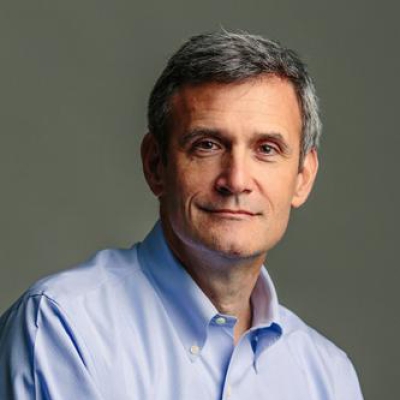“When the Gods wish to punish us, they answer our prayers.” —Oscar Wilde
I’m getting a little nervous about our blossoming love affair with the “science of reading.” This may seem odd since I’ve been banging on about reading for over a decade, variously lampooning or shaking my fist at the dumb and the deleterious ways we teach it, and ranting about how poorly we prepare teachers to improve reading achievement, particularly among disadvantaged students.
I’m truly grateful for the remarkable (if overdue) groundswell of interest in how children learn to read, what it means to be a proficient reader, and how to ensure that teachers are prepared to teach reading effectively. But I’m also keenly aware of the fad-driven nature of education practice and policy. The pattern is familiar: We’re quick to grab hold of shiny new ideas (usually just smartly repackaged old ones) and abandon them just as quickly when they don’t offer the quick fix that advocates always seem to promise.
The potential for the science of reading (SOR) to get sucked into this vortex of overpromise-and-underdeliver is significant and worth thinking through before it happens. As Mark Seidenberg of the University of Wisconsin–Madison describes it, the science of reading is “a body of basic research in developmental psychology, educational psychology, cognitive science, and cognitive neuroscience on reading” stretching back decades. We’ve learned quite a lot about what happens “under the hood” when we read, with “important implications for helping children to succeed,” Seidenberg writes. “But it has not been incorporated in how teachers are trained for the job or how children are taught.” That’s not surprising. The complexity can be overwhelming—and daunting to apply it to classroom practice. Which leads to efforts to distill, to simplify, to codify. The inevitable bumper-stickering is well underway, reducing SOR, for example, merely to “phonics.”
On the bright side, the 2020 Teacher Prep Review from the National Council on Teacher Quality found significant progress on reading instruction. The number of U.S. teacher- prep programs to embrace reading science has crossed the halfway mark. Fifty-one percent of 1,000 elementary teacher preparation programs across the country earned an A or B for their coverage of “key components” of the science of reading, up from just 35 percent seven years ago. That’s encouraging.
But it elides an important question: Just how expert do teachers need to be in reading science in order to be effective reading teachers? I suspect it’s enough to have a working knowledge of the components of reading (phonics, phonemic awareness, vocabulary, reading comprehension, and fluency), a well-designed instructional program, and to be a competent diagnostician—savvy enough to recognize reading failures early and prescribe an effective intervention or referral. Expecting tens of thousands of elementary school teachers to develop deep expertise in the science of reading to improve instruction isn’t a winning strategy. It’s an invitation for already overwhelmed teachers to continue to default to their comfort zone: balanced literacy and cheerleading for “lifelong love of reading.”
The complexities of reading instruction put state policymakers in a bit of a bind. It’s not hard to make districts, schools, and teachers do something; it’s very hard to make them do it well. Doing something complicated, doing it well, and on a mass basis is unheard of.
It will take a judicious combination of leaning on ed schools to raise their game, incentivizing quality curriculum adoptions, targeted teacher professional development—and a lot of patience and political will—to keep the science of reading train on the tracks, and to improve outcomes for kids.
At a recent Literacy Summit hosted by Council of Chief State School Officers, David Steiner, Director of the Johns Hopkins Institute for Education Policy, compared the state of reading instruction in the U.S. to “chemistry departments teaching alchemy.” A former ed school dean who served as New York’s State’s education commissioner, he observed that state education departments exhibit “a curious fear of universities.” This is strange, he said, because states “have multiple tools at their disposal they’re simply not using.”
“Accreditation is a real tool. A school of education, an alternative certification program cannot operate if the state says it can’t operate,” Steiner observed. “Certification is a real tool. Teachers cannot teach if the state says they’re not certified to do so.” Steiner encouraged state superintendents to hold schools of education to account for the impact their graduates have in the classroom.
Establishing “competencies” in the science of reading is a “tiny first step,” Steiner cautioned. “All that happens is that it appears in a paragraph in a description of a curriculum, which then gets checked by somebody deep inside a state department of education.” I agree, but I’d advance Steiner’s argument even further: The vast majority of teachers who work in a given state were trained and certified in that state. States are also heavily (and appropriately) involved in decisions involving curricula, teaching methods, and instructional materials in their public schools. This adds up to a permission slip—even a duty—for states to make a few judicious bets about curricula and instruction to align efforts around reading instruction.
Louisiana offers a good model that honors local control while incentivizing the adoption of high-quality curricula. Several years ago, the state launched a system of evaluating English language arts and math curricula into tiers, and putting various sweeteners in place to induce districts to adopt the highest-rated ones, while aligning professional development and assessments to what gets taught. The next step might be requiring ed schools to certify candidate on a “tier one” curriculum. States would be within their rights to make it a condition of accreditation or certification.
It works just as well in the opposite direction: In the absence of state mandates, an enterprising ed school dean might partner with local school districts and charter management organizations to graduate candidates trained in the specific reading curricula they have adopted, enhancing teacher preparedness and making their graduates more attractive hires. Over time this would create a market for scientifically-sound curricula—and for teachers well-versed in their implementation. The critical point is that, under either scenario, the effort is aimed at ensuring teachers are qualified to teach a curriculum, not merely “exposed” to the science of reading in teacher prep or professional development. To make SOR more than a box-checking exercise and the next failed educational fad, it has to be operationalized for teachers and become a focal point of teacher training and ongoing professional development—and reinforced and rewarded at testing time.
Ed schools and “alt cert” programs might resist being pushed in a direction they might perceive as vocational training, but it’s a fight worth having. At the same CCSSO gathering, Nebraska education commissioner Matthew Blomstedt described a meeting early in his tenure where he was told that colleges and universities were “very powerful” because they controlled teacher certification in his state. “The only reason you prepare teachers in Nebraska,” Blomstedt reminded them, “is because I say you can.”
Education’s sudden interest in the science of reading is a great thing, and long overdue. The best way for it to go sideways is to put the lift entirely on teachers, whose jobs are already extraordinarily challenging, to master the arcana of cognitive psychology and neuroscience, and to expect them to apply it in the classroom. This doesn’t mean transforming the average kindergarten teacher into a cognitive scientist as a condition of certification. The key is operationalizing the science of reading for overworked teachers. That means states using their legitimate authority to ensure quality literacy curricula and materials get in front of children, and making sure teachers are well-trained in implementing them. States can and should use their authority over teacher preparation to ensure that the schools and programs prepare teachers to be competent and successful, and to incentivize the adoption and use of knowledge and language-rich curricula within and between grades, particularly in the elementary and middle school years.
The alternative is seeing the sudden and intense interest in the science of reading become the Next Big Thing. Then the Next Big Nothing.
States are in the driver’s seat. Drive carefully.




